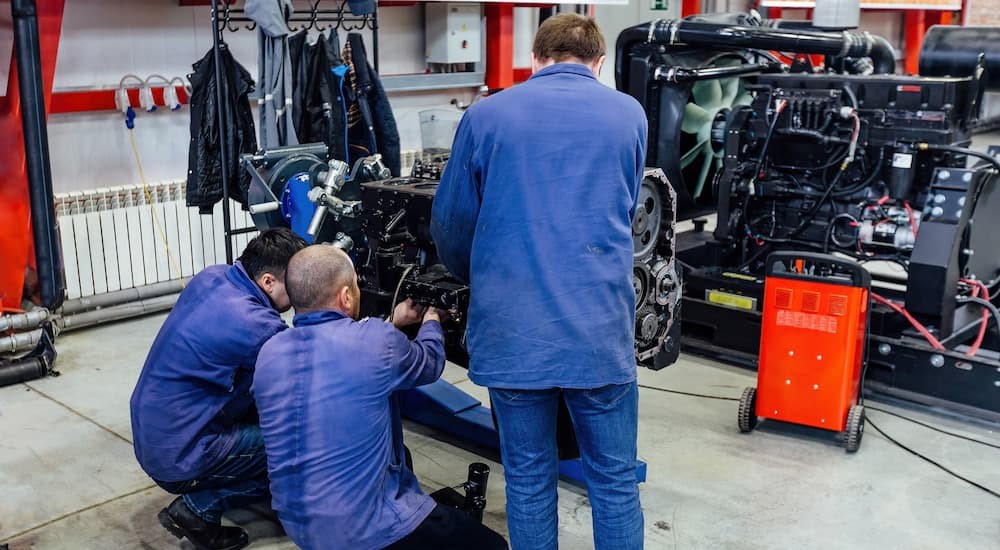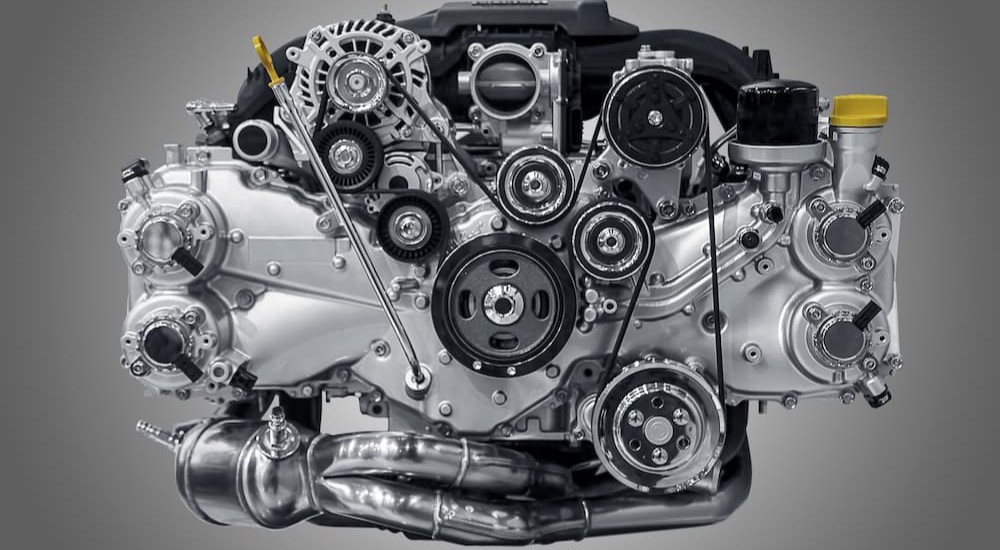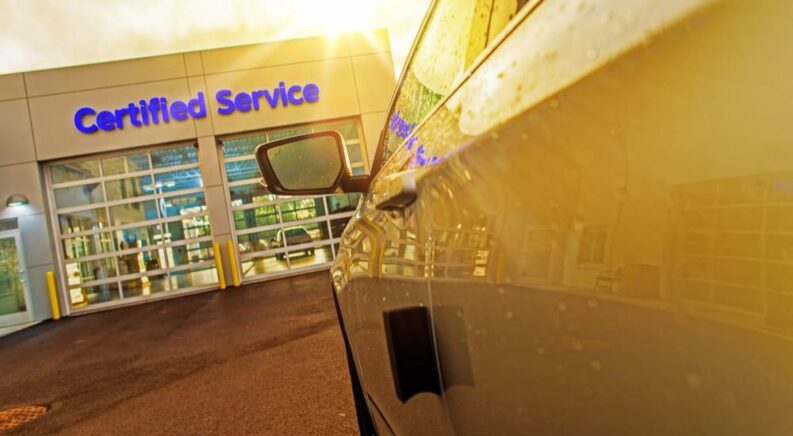The do-it-yourself movement has left many feeling empowered to take on tasks they never would have before. With that comes the need to expand their knowledge on a variety of topics, like how to restore an old truck, or ways to Plastidip your car. Of course, some things may still have you asking, “Where is the nearest service center near me?” But for those tasks you can take on yourself, it’s good to be well-informed.
If you don’t know much about cars and you plan to work on a vehicle anytime soon, you may discover that there is a lot of jargon that goes along with it. Whether it’s technical terms, slang, or abbreviations, there is a ridiculous amount of information out there. That’s why it’s best to start at the beginning and learn the basics. What do all cars have in common? An engine.
Well, not exactly. With the automotive industry taking a dive into electric vehicles, not all of them have engines that burn fuel to move down the road. At this point, though, most of them still do, so that’s a great starting point. This brief guide will lay out the basics of engine jargon to get you headed in the right direction.

Ice, Ice, Baby
Engines found in most vehicles are called internal combustion engines, sometimes shortened to ICE. It is called this because that is literally what happens. It combusts fuel inside the engine to produce power and make the car go. Gasoline engines are typically what you will find in cars, SUVs, CUVs, and even light-duty trucks. Then there are diesel-powered engines, which are often found in heavy-duty trucks, but diesel is not exclusively used for heavy-duty use.
Gasoline makes your vehicle move by running through a four-stroke combustion cycle. The engine has a number of cylinders, inside which are pistons that move up and down during the cycle. Most vehicles have four, six, or eight cylinders. They are typically in an inline arrangement, or a V arrangement in a V6 or V8. The H arrangement, unique to Subaru and Porsche these days, has the cylinders placed horizontally across from each other, with either two or three cylinders on either side.
The first stroke of the combustion cycle, aptly called the intake stroke, is when gasoline and air are introduced into the cylinders. The intake valves, located in the cylinder head, open to let air into the cylinders. At the same time, the fuel injector sprays fuel into the cylinder, which mixes with the air.
The next step in the cycle is the compression stroke, when the piston moves back up and compresses the air and fuel mixture inside the cylinder. This increases the amount of energy that will be released during the next part of the cycle, the combustion stroke.
When the piston reaches the top of its stroke, the spark plug ignites the compressed fuel and air mixture, causing a small explosion inside the cylinger. The energy from this explosion pushes the piston back down. This is sometimes called the power stroke because it is the part of the ignition cycle that actually generates the engine’s power.
After the piston reaches the bottom of the cylinder, the exhaust valves in the cylinder head open. The piston rises again, pushing the exhaust gas out of the open valve, which makes its way out of the vehicle through the exhaust system. This is the fourth stroke in the cycle, which is called the exhaust stroke. Now the whole cycle starts again.
Diesel Differences
Diesel engines run in a similar fashion to gasoline engines but with a few important differences. Diesel engines also run through a four-stroke cycle like gasoline engines: the intake stroke, the compression stroke, the combustion stroke, and the exhaust stroke. Pistons move up and down, compressing air and releasing exhaust, just as in a gasoline engine.
However, the air and fuel are not injected at the same time as they are in a gasoline engine. Diesel fuel is not as volatile as gasoline, which means the air must be introduced into the chamber before the fuel is added. Additionally, the cylinder must already be hot before the combustion process can begin. To accomplish this, when you turn the ignition on, you must wait to actually start the engine while the glow plugs turn on and preheat the cylinders. A light on the dashboard indicates that this is happening. After this light turns off, you can start the engine normally.
From this point on, the combustion cycle works similarly to a gas engine, but with one important exception. There is no spark plug to ignite the air and fuel mixture. It ignites automatically from the heat and compression inside the cylinder. The rest of the cycle is basically the same.
A Few More Things
There are a few more important basics to know about the gasoline engine and the parts that make it work. As mentioned before, both engines have pistons that move up and down within the combustion chamber or cylinder. They are attached to connecting rods, which in turn are connected to the crankshaft. This is what sends power through the transmission, and eventually to your wheels.
Attached to the crankshaft is a timing belt or chain that turns one or more camshafts. The camshaft determines the precise timing of the intake and exhaust valves opening and closing, as well as how far they open. The opening and closing of the intake and outtake valves are controlled by the valvetrain, which is connected to the cylinder head. It is a lot like the song, “The Skeleton Dance.” The valvetrain is made up of even more parts, like the rocker arms. Rocker arms move the pushrods connected to the intake and exhaust valves.
The valves, and often the camshafts themselves, are inside the cylinder head, which sits on top of the engine. This is also where the spark plugs sit, as well as the fuel injectors. In a diesel engine, the glow plugs would be here instead of the spark plugs.

Diesel vs. Gas
Beyond the mechanics of how each fuel ignites inside the engine, there are some more differences to note. For one, diesel is often more fuel-efficient. This is because diesel is more energy-dense. Plus, the extreme compression also adds to the fuel efficiency aspect.
Another benefit of diesel fuel engines is that they are known to last longer than gas engines. One reason is because of the type of fuel. Another factor is how sturdy the diesel engine is built in order to handle the higher compression required.
You might be asking why isn’t diesel used in all vehicles. Despite diesel’s advantages, it does not provide as much power as gas does. Diesel is great for long drives, carrying cargo, or towing heavy loads. That’s why it’s often used in heavy-duty vehicles. However, when it comes to a performance vehicle, gas is what you want.
It used to be argued that diesel was more dirty than gas, but that is not as true today as it was before. There is also an argument that diesel is more expensive, but this can vary. Besides, none of this truly matters since many vehicle manufacturers are moving towards electric anyway.
A Truly Complex Machine
In the end, this doesn’t even begin to scratch the surface of automotive mechanics. Engines are complex, and so is the process of repairing them. But if you have the knowledge and understanding of how they work, there is no reason you can’t take a swing at it. Now you just have to decide if you want to go diesel or gas.

